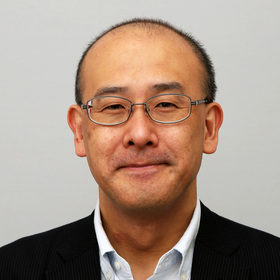Art and Volunteers
As society changes, both the expression and production processes in art also evolve and the way we engage with art evolves as well, so it is natural that the way of volunteering also evolves. Under the assumption that the positions of the artist and art viewer are different, if the individual elements in the relationship between artists and viewers through the artwork breaks down, rather than just viewing the finished artwork as an object, people other than the artists themselves may participate and be involved in the production, and sometimes they may be regarded as actually part of the artwork. Citizens who directly participate in the production process and work to create the art or who support artists in residence (AIR), such as providing accommodation and food or serving as a bridge to connect with the local residents, or those acting as guides to provide explanations about the artwork, are all people who can be called volunteers.
Just as it is difficult to define art, it is also difficult to define what volunteering is. Roughly speaking, it means "a voluntary altruistic act (or person) that does not seek economic or social rewards". On the website of the Tokyo Voluntary Action Center (a social welfare corporation) "The four principles of volunteer activities" are "acting on your own initiative - autonomy and independence", "supporting each other and learning from each other - sociality and cooperation”, ·"not seeking rewards – free of charge and unpaid activities", and "creating a better society through creativity, pioneering and trailblazing activities".
The fact is that unless the society is a society where volunteers are respected, consumers who only passively choose what is provided will not grow into citizens who will promote the creation of a better society, and a civil society will not develop. Volunteers and citizens grow because they have the opportunity to participate and nurture each other.
However, volunteers do not just play the role of workers. Volunteers grow as citizens because participation can give them the opportunity to develop. The desire to continue volunteering comes from actually experiencing the results. Volunteers say that they were “happy to have participated” because they feel that it helped the artists and the local community. And the reason that they invite family members and acquaintances, "Let’s join in voluntary activities together!" is because they want to share this joy that they feel.
In other words, by giving people the opportunity to participate as volunteers, it can be said that Art and artists give consumers a chance to grow into citizens. They are not just playing a role as workers but can feel that they are able to make a contribution to the artists and local communities and it is necessary to make efforts to and think of ways to give people the opportunity to foster each other as well. It is also a universal principle common to all fields, such as business and sports, that experiencing a feeling of achievement and growth becomes the driving force behind increasing participation.
Of course, the reasons why those on the side of seeking support, such as artists and the groups that are active in welfare, education and the environment, hope to get external human resources to help them, are due to the successful results and efficiency of having such support. However, volunteers are not employees or contractors who receive compensation to carry out the work. There may be cases where the artist or leader of the organization is an “attractive character” but this is only a “preference” and it is difficult to get many people to continuously participate. In order to get organizations such as governments and companies to participate, it is necessary to share the definition of “what kind of results do you want to achieve and for whom?” This is why many people and organizations are able to take part in voluntary activities that have a theme with which they can easily empathize, such as the people they are helping or the importance and urgency of the project, such as welfare activities or aid for victims of natural disasters and it is easy for this to lead to continuous support. According to the Cabinet Office's "Survey on Citizens' Social Contributions” (2016) out of 3,707 respondents, 17.4% replied that they had experienced volunteering. By field, the top categories were "child and youth development" (25.9%), "community development and community revitalization" (25.5%), "health, medical care and welfare" and "nature, and environmental conservation" (19.8%). "Art, culture and sports” (16.0%) were in the 6th place.
The most common and serious problem not only in art, but also in education and the environment, and in the most basic and universal area for humankind, that is the development of autonomy and local communities, is the shortage of bearers. The working-age population (aged 15 to 64) in Japan has already been in decline since 1995 and the total population has been decreasing since 2010, while on the other hand, the population aged over 85, where the need for nursing care and medical treatment is high, has increased from 1.57 million people in 1995 to 4.88 million in 2015 and in the year 2035 will increase to 10.1 million, as much as 9% of the total population. In the area of welfare, such as daily life support for the elderly, there is an ever-increasing demand for employees in the insured long-term nursing care business and for volunteers in local communities.
Under these circumstances, rather than having short-term disposable volunteers, we need to get the volunteers who have specially taken an interest and participated in voluntary activities to continue participating as ongoing partners, and in order to do this, we must carry out a minimum level of volunteer management. In order to have both those people who pay salaries and those who do not, continue to exert their abilities together as members of an organization, it is necessary to solidly implement the "5 basic duties in human resources management” *1. (1) Formation of the right people and the right place, (2) setting and evaluation of goals, (3) maintenance of a system that is prepared to accept people, (4) training and development, (5) recruitment. From among these principles, the most important point for the "maintenance of a system that is prepared to accept people" is to set rules and to be grateful.
"5 basic duties in human resources management" is in IIHOE "Socio Management" first issue "5 Principles to Challenge Society, 12 Strengths to Help an Organization Develop".
http://blog.canpan.info/npomanagement/archive/217 refer to page 72.
Even if they are volunteers they are members of staff who protect the safety of the site and because they are volunteers, they should be treated justly and fairly, from the handling of personal information to the payment of transportation expenses. I recommend that rules should be established in advance and only after having the volunteers pledge their compliance with these rules, they should be invited to participate. In addition, for those volunteers who are not blessed with opportunities to directly receive the appreciation or experience the excitement of the participants on site, such as staff who support the preparations backstage or do office work, opportunities or a system should be created for these volunteers to receive appreciation in the same way as the artists do; this would provide important reasons for the volunteers to feel that they "want to continue" or "want to invite others to join".
If art production and exhibition of artwork (exhibitions and performances) are to be performed for a longer period or on a larger scale, higher project management skills are required for both the artists and also their agents. By improving volunteer management, which is one of the elements involved, it can be expected that the points of contact between art and society will expand further, and that a civil society will also develop.



